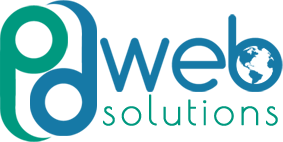
Following the National Vocational Education and Training Regulator Amendment (Governance and Other Matters) Bill 2020, ASQA has made a significant upgrade to the architecture of the vocational education and training (VET) sector and its approach.
The rapid change roadmap includes strengthening ASQA’s strategic stakeholder engagement and education to build provider capacity for self-assurance.
In line with this new approach, ASQA has shifted its regulatory approach into practical engagement with providers. Five best practice principles underpin this method – one of them being a focus on self-assurance, i.e., to support the quality of RTOs through their self-assurance.
Thanks to ASQA’s new blueprint, more than any time ever, ASQA is driving engagement and cooperative relationships with RTOs and promoting and building a shared understanding of self-assurance and excellence in training outcomes.
In a working paper issued in April 2021 under the title “Approach to Assessing Performance”, ASQA has made it clear that the performance assessment (the new language for auditing) will mainly focus on self-assurance. The paper also clarifies that ASQA’s increased focus will be on clause 2.2 of the Standards for RTOs. In other words, RTOs existence will depend on their validation and the self-assurance attested through their validation practice.
In light of ASDA’s new approach to self-assurance, validation has become the centre of gravity of compliance. Having such clear communication by ASQA, the ball is in the RTO’s court.
What is self-assurance and clause 2.2, and why is validation in the centre?
Self-assurance refers to the way the RTO’s operations are managed to ensure a focus on quality, continuous improvement and ongoing compliance. In contrast, Clause 2.2 systematically monitors training and assessment strategies and practices to ensure continued compliance.
Both are centred at one point – Validation. The best way to systematically evaluate and use the outcomes of the evaluations to continually improve the RTO’s training and assessment strategies and practices is through evaluation information collected under clauses 1.9, 1.10, and 7.5, validation outcomes, client, trainer and assessor feedback and complaints and appeals.
It is for obvious reasons that in 2020, ASQA identified the following clauses of concern in its regulatory strategy, which are directly related to lack of thorough validation:
1.8 implement effective assessment systems
1.1 have appropriate training and assessment strategies and practices, including the amount of training
1.3 have the resources to provide quality training and assessment, including sufficient trainers and assessors, learning resources, support services, equipment and facilities
3.1 AQF certification is issued only where the learner has been assessed as meeting training product requirements
1.2 appropriate amount of training is provided, taking account of the learner’s skills, knowledge, and experience and mode of delivery.
Time and history have repeatedly testified that RTOs do not focus on validation; hence, more than 60% of RTOs have their assessment tools deemed non-compliant..
There are very few, if any, who have not been handed a dreaded report by ASQA, a non-compliant report. The two common non-compliance that consistently turns up in audit reports are the Training and Assessment Strategy and the Assessment tools – the latter being the top non-compliance.
The main reason for the above is the lack of conducting appropriate validations and ensuring compliance with Clause 1.9, 1.10 and 1.11 of the Standards for Registered Training Organisations.
These clauses relate to the requirements for assessment validation, including the need to have an assessment validation plan, meet minimum validation benchmarks and conduct it in a way that ensures its validity and integrity
ASQA has identified systemic risks in the following qualifications: Equine, Security, Early Childhood Education and Care, Aged and Community Care, Construction (white card training) and Training and Education (TAE). ASQA advises that for Clause 1.10, training products in these areas may need to be validated more frequently.
Despite ASQA’s reminders that assessment validation is a vital tool for providers seeking to get the best results from training and assessment systems, many RTOs are not clear about validation’s role in ASQA’s performance assessment process.
The price tag that comes with the 1.8 non-compliance is dire because if the RTO is found to have non-compliance in 1.8, that will by default trigger non-compliance in 3.1 as non-compliance in 1.8 means issuing AQF certification where the learner has NOT been assessed as meeting training product requirements.
The result is a recall of all students who have participated in the unvalidated assessment tool and revoking their qualifications.
But why do RTOs fail the validation audit when they think they have validated their assessment tools?
There are several factors. The main reason is that not many RTOs realise that the compliance requirements that RTOs face when conducting validation are more complex than many understand or acknowledge.
Validation is more than:
- Having a checklist that ticks and flicks,
- Having a compliance officer that signs the signature boxes
- Having a validation schedule that never materialises.
- Finding consultants who are happy to endorse any validation without worrying about professional and ethical obligations and the RTOs risks.
So, the questions are:
- How do you ensure that training and assessment strategies align with training package requirements?
- How do you ensure that practices align with training and assessment strategies?
- How have the outcomes of industry engagement been incorporated into your strategies and practice?
- How do you know, from an organisation perspective, that you issue a qualification to a competent student?
Multiple questions, but the answer is one – organise quality-focused validation by an independent validator, who is not employed or subcontracted by the RTO and has no other involvement or interest in the operations of the RTO.
Validation requires systematic processes and ethical and pragmatic components to compliance. It requires more than an internal team to manage and maintain a positive reputation. It requires experts to decipher confusing or abstract standards and establish and integrate best validation practices. It requires engaging external validators to evaluate your training and assessments.
This is the very reason why RTOs should involve independent subject matter experts like CAQA in their validation plan and practices
Here at CAQA, our seriousness starts from our definition of Validation.
CAQA goes beyond the classical definition of validation as an assessment health check tool. We see validation as the destination of high-quality training and assessment. For us, validation is the cornerstone of high-quality training and assessment that equips students for employment or further study, and a means to success in their chosen career.
How does CAQA conduct Validation?
Our validation’s overarching vision and purpose is comprehensive and does not focus on the assessment tool only.
By engaging in the validation process, we will make sure that we:
- Check that your assessment tools have produced valid, reliable, sufficient, current and
authentic evidence, - Enable your RTO to make reasonable judgements about whether training package (or VET
accredited course) requirements have been met - Review a statistically valid sample of the assessments and make recommendations for
future improvements to the assessment tool, process and outcomes and acting upon such
requests. - Ensure your assessment validation plays a vital role in ASQA’s performance assessment
process(audit). - Make it an integral part of your self-assurance to achieve excellence in training outcomes,
- Make it an integral part of the systematic monitoring procedure of your training and
assessment strategies and practices to ensure ongoing compliance with Standard - Ensure it becomes routine practice to evaluate systematically and use the outcomes of the
evaluations to continually improve training and assessment strategies and
practices - Review how practice aligns with systems and how to monitor, review and improve
techniques. - Align assessment practice with the requirements of the relevant Standard.
- Ensure you own a system for ensuring ongoing compliance with the relevant Standard.
- Ascertain a mechanism to monitor, review, and continuously improve
(self-assurance) to ensure compliance with the relevant Standard requirements on an
on an ongoing basis. - Strengthen the interaction between practice, systems and continuous improvement
- Provide validation related professional development to management and staff to help
you manage your operations and ensure a focus on quality, continuous improvement and
ongoing compliance.
Call us on 1800 266 160 or email info@caqa.com.au to find out more. Let us bring CAQAs Validation professional team to you – don’t wait until your next audit is due.




Recent Comments